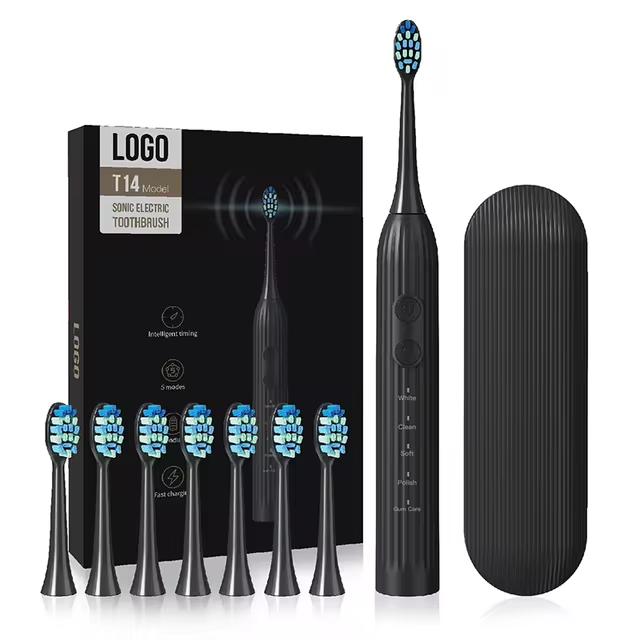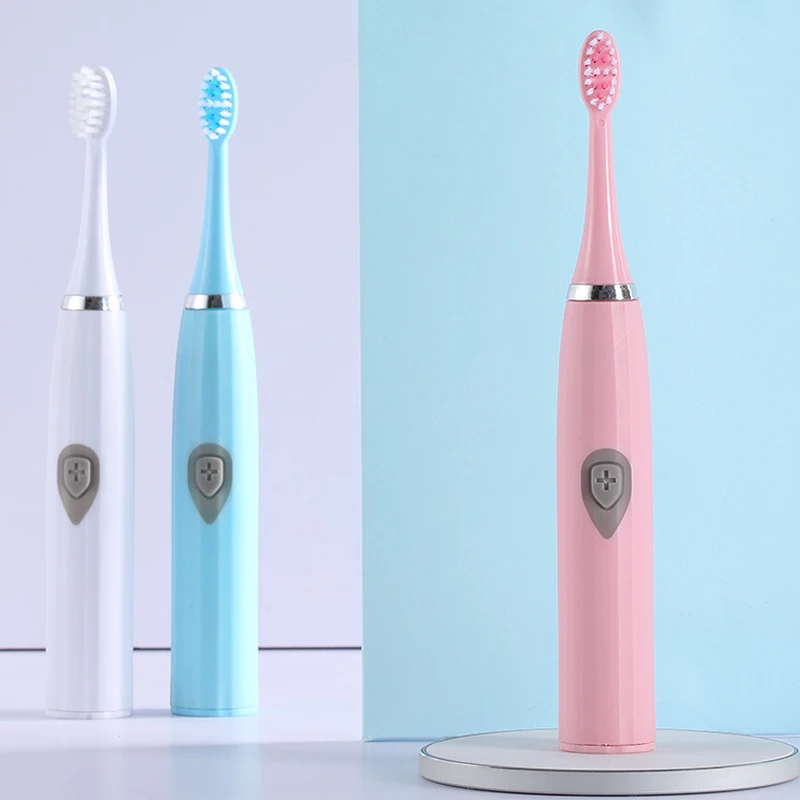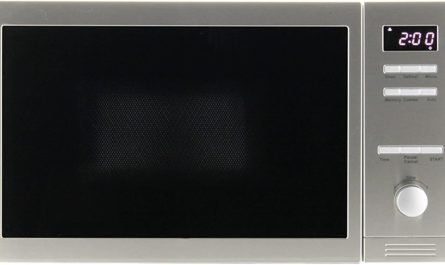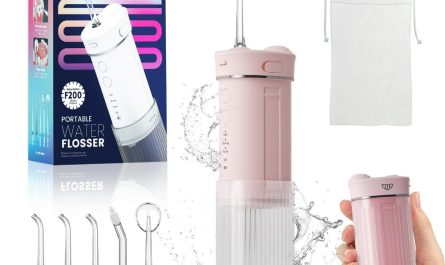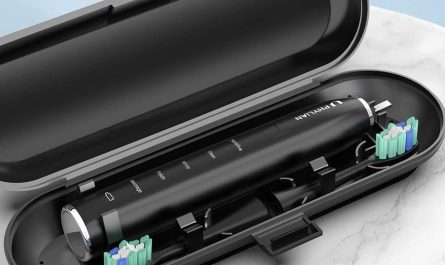Introduction to Electric Toothbrushes
In today’s fast-paced world, maintaining optimal oral hygiene is more important than ever. One significant advancement in dental care technology is the electric toothbrush. Understanding how to brush teeth with an electric toothbrush can revolutionize your daily dental routine, offering superior cleaning efficiency compared to traditional manual brushes. This comprehensive guide delves into the intricacies of electric toothbrushes, their benefits, selection process, and the correct techniques to maximize their potential for a healthier smile.
Benefits of Using an Electric Toothbrush
Electric toothbrushes have surged in popularity due to their numerous advantages over manual brushing. Recognizing these benefits can motivate you to make the switch and fully utilize the capabilities of an electric toothbrush.
Superior Plaque Removal
Studies have shown that electric toothbrushes are more effective at removing plaque than manual toothbrushes. The oscillating and rotating movements of the brush head can reach areas that are often missed with manual brushing, ensuring a more thorough clean.
Improved Gum Health
Gentle yet effective brushing motions can significantly reduce gum inflammation and bleeding. Electric toothbrushes often come with pressure sensors that prevent excessive force, protecting your gums from potential damage.
Built-in Timers for Optimal Brushing Time
One common issue with manual brushing is the uncertainty about how long to brush. Most electric toothbrushes feature built-in timers, usually set to the recommended two minutes, ensuring you achieve the optimal brushing duration for effective cleaning.
Ease of Use
For individuals with limited dexterity, such as those suffering from arthritis or other conditions, electric toothbrushes offer an easier and more comfortable brushing experience. The automated movements handle much of the work, reducing the physical effort required.
Enhanced Motivation and Engagement
The technological features of electric toothbrushes, including LED indicators, smartphone connectivity, and interactive apps, can make the brushing experience more engaging, especially for children. This increased motivation can lead to better compliance with daily oral hygiene practices.
Choosing the Right Electric Toothbrush for You
Selecting the ideal electric toothbrush involves considering various factors to match your specific oral care needs and preferences.
Types of Electric Toothbrushes
There are primarily two types of electric toothbrushes: oscillating-rotating and sonic. Oscillating-rotating brushes move in circular motions to break up plaque, while sonic brushes vibrate at high speeds to create fluid dynamics that enhance cleaning.
Brush Head Options
Different brush heads cater to various needs, such as sensitive teeth, whitening, or orthodontic care. Choosing a brush head that aligns with your dental requirements can enhance the effectiveness of your brushing routine.
Battery Life and Charging Options
Depending on your lifestyle, you may prefer a toothbrush with a long battery life, especially if you travel frequently. Some electric toothbrushes come with rechargeable bases, while others offer battery-operated models for greater portability.
Additional Features
Modern electric toothbrushes may include features like pressure sensors, multiple cleaning modes, and Bluetooth connectivity for tracking your brushing habits. Assessing which features are important to you can help narrow down your choices.
Budget Considerations
Electric toothbrushes vary in price, from budget-friendly options to high-end models with advanced features. Determining your budget beforehand can help in selecting a toothbrush that offers the best value for your investment.
Setting Up Your Electric Toothbrush
Proper setup is crucial to ensure your electric toothbrush operates efficiently and effectively.
Assembling the Brush
Begin by attaching the brush head to the handle. Most models have a simple snap-on or twist-on mechanism. Ensure the brush head is securely attached to prevent any malfunction during use.
Charging the Toothbrush
If you have a rechargeable model, plug the toothbrush into the charger and allow it to charge fully before the first use. This can take anywhere from several hours to overnight, depending on the model.
Selecting the Right Brush Head
Choose a brush head that suits your dental needs, such as soft bristles for sensitive gums or specialized heads for orthodontic appliances. Replace the brush head as recommended by the manufacturer, typically every three months.
Familiarizing Yourself with the Controls
Take a moment to understand the different buttons and settings on your electric toothbrush. Learning how to switch between modes, adjust speed settings, and use additional features will enhance your brushing experience.
Step-by-Step Guide on How to Brush Teeth with Electric Toothbrush
Mastering how to brush teeth with electric toothbrush requires understanding the correct technique to maximize its benefits.
Preparing Your Toothbrush
- Wet the Bristles: Lightly wetting the bristles before applying toothpaste can soften them and improve the overall brushing experience.
- Apply Toothpaste: Squeeze a pea-sized amount of fluoride toothpaste onto the brush head. Using too much toothpaste can lead to excess foam and reduce cleaning efficiency.
Positioning the Brush Correctly
- Angle the Brush Head: Position the brush head at a 45-degree angle against the gum line. This angle allows the bristles to reach both the teeth and gums effectively.
- Cover All Surfaces: Ensure that the brush head is in contact with all surfaces of your teeth, including the outer, inner, and chewing surfaces, as well as the area along the gum line.
Brushing Technique
- Let the Brush Do the Work: Do not move the brush head vigorously. Instead, guide the brush gently along your teeth, allowing the electric toothbrush to perform the cleaning motions.
- Divide Your Mouth into Sections: Mentally divide your mouth into quadrants (upper left, upper right, lower left, lower right). Spend approximately 30 seconds brushing each section to ensure comprehensive coverage.
Timing Your Brush
- Use the Built-in Timer: Most electric toothbrushes have a timer that alerts you every 30 seconds to move to a different section of your mouth. Follow these prompts to maintain the recommended two-minute brushing duration.
Rinsing and Cleaning Up
- Rinse Your Mouth: After brushing, rinse thoroughly with water to remove toothpaste and loosened plaque.
- Clean the Brush Head: Rinse the brush head under running water to remove any debris. Allow it to air dry completely before the next use.
- Store Properly: Place your toothbrush in an upright position in a well-ventilated area to prevent moisture buildup and bacterial growth.
Common Mistakes to Avoid When Using an Electric Toothbrush
Even with an electric toothbrush, certain errors can hinder effective oral hygiene. Being aware of these common mistakes can help you maximize the benefits of your electric toothbrush.
Applying Excessive Pressure
Pressing too hard can damage your gums and tooth enamel. Let the electric toothbrush do the work, and use only gentle pressure.
Skipping Toothbrush Maintenance
Neglecting to clean and replace your brush head regularly can lead to bacterial buildup, reducing the effectiveness of your toothbrush and potentially harming your oral health.
Not Covering All Areas
Failing to brush all sections of your mouth can lead to uneven cleaning. Ensure you methodically cover each quadrant of your mouth during brushing.
Using Incorrect Brushing Modes
Many electric toothbrushes offer different modes for various cleaning needs. Using the wrong mode for your specific requirements can result in suboptimal cleaning or unnecessary gum irritation.
Ignoring the Timer
Rushing through brushing or not following the recommended two-minute duration can leave plaque behind. Adhering to the timer ensures comprehensive cleaning.
Maintenance and Care of Your Electric Toothbrush
Proper maintenance extends the life of your electric toothbrush and ensures it continues to function effectively.
Regular Cleaning
After each use, rinse the brush head thoroughly with water to remove toothpaste and debris. Periodically, you can use a toothbrush sanitizer or a mild antibacterial soap to keep the brush head hygienic.
Replacing the Brush Head
Replace your brush head every three months or sooner if the bristles become frayed. Worn bristles are less effective at cleaning and can cause gum irritation.
Charging Practices
For rechargeable models, follow the manufacturer’s instructions for charging. Avoid letting the battery completely discharge regularly, as this can reduce battery lifespan.
Inspecting for Wear and Tear
Regularly check the brush head and handle for any signs of damage. Replace any parts that show significant wear to maintain optimal performance.
Storing Your Toothbrush
Store your toothbrush in an upright position in a dry area to prevent moisture accumulation and bacterial growth. Avoid storing it in closed containers where moisture can become trapped.
Incorporating Electric Toothbrush into Your Daily Routine
Integrating an electric toothbrush into your daily habits ensures consistent oral hygiene and leverages the full benefits of this advanced tool.
Morning and Evening Brushing
Use your electric toothbrush twice daily, morning and night, to maintain clean teeth and fresh breath. Establishing a routine helps in remembering to brush regularly.
Complementary Oral Care Practices
Pair brushing with flossing and using mouthwash for a comprehensive oral care regimen. Electric toothbrushes can clean surfaces effectively, but flossing removes plaque and food particles between teeth.
Regular Dental Check-Ups
Maintain regular visits to your dentist for professional cleanings and oral examinations. Your dentist can provide personalized advice on optimizing your brushing technique and overall oral health.
Adapting for Special Needs
If you have braces, implants, or other dental appliances, choose an electric toothbrush with specialized brush heads and modes designed to handle these unique requirements.
Encouraging Family Use
Promote oral hygiene within your household by encouraging family members to use electric toothbrushes. Many models come with multiple brush heads and customizable settings for different users.
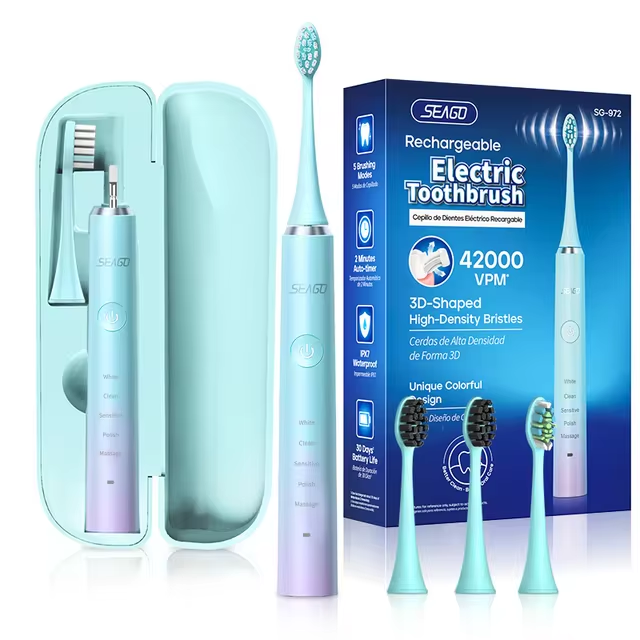 FAQs About Electric Toothbrushes
FAQs About Electric Toothbrushes
How Often Should I Replace the Brush Head?
It is recommended to replace the brush head every three months or when the bristles become frayed. Regular replacement ensures effective cleaning and reduces the risk of bacterial buildup.
Can Electric Toothbrushes Whiten Teeth?
While electric toothbrushes primarily focus on removing plaque and preventing cavities, some models come with whitening modes or brush heads designed to help remove surface stains, contributing to a brighter smile over time.
Are Electric Toothbrushes Safe for Sensitive Teeth?
Yes, many electric toothbrushes offer modes specifically designed for sensitive teeth and gums. These modes adjust the brushing speed and pressure to provide gentle yet effective cleaning.
Do I Need a Special Toothpaste for Electric Toothbrushes?
No, you can use any fluoride-based toothpaste with an electric toothbrush. However, avoid abrasive whitening pastes that can wear down tooth enamel over time.
Is It Better to Use an Electric or Manual Toothbrush?
Both electric and manual toothbrushes can effectively clean teeth when used correctly. However, electric toothbrushes offer advantages such as superior plaque removal, built-in timers, and ease of use, making them a preferred choice for many individuals.
Conclusion: Embracing Electric Toothbrush in Your Oral Hygiene Routine
Learning how to brush teeth with electric toothbrush unlocks a new level of oral care, combining technology with daily hygiene practices for a healthier, brighter smile. By understanding the benefits, selecting the right model, mastering the brushing technique, and maintaining your device properly, you can significantly enhance your dental health. Embrace the electric toothbrush as a valuable tool in your daily routine, and experience the difference it can make in achieving optimal oral hygiene and overall well-being.

